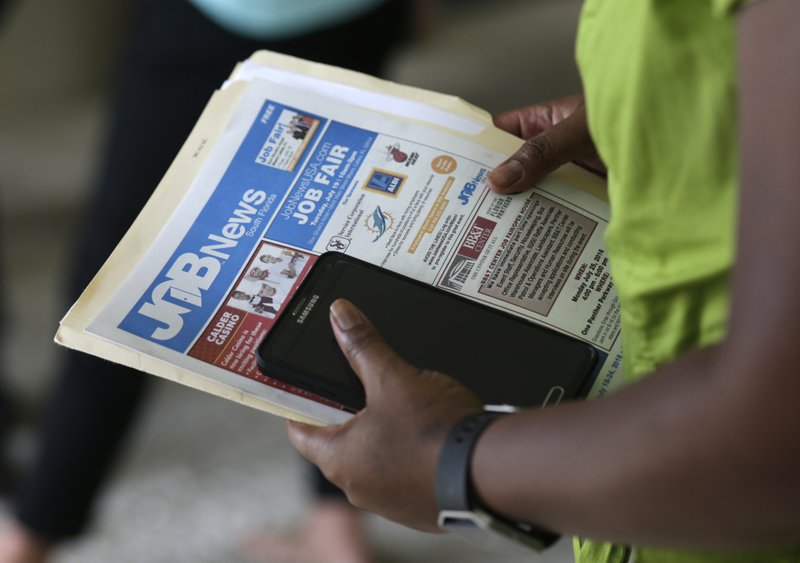WASHINGTON -- U.S. employers posted fewer jobs in October than the previous month, but job openings are still at a mostly healthy level that points to steady hiring ahead.
Job openings slipped 1.8 percent to 5.5 million, the Labor Department said Wednesday. Hiring also fell to just under 5.1 million, while the number of people quitting declined to about 3 million.
While solid, the data weakened from September, suggesting that hiring is unlikely to accelerate beyond its current moderate pace anytime soon. Growth has been sluggish for most of this year, though it picked up in the July-September quarter.
The data follows last week's jobs report, which showed that employers added 178,000 jobs, matching this year's average monthly gain. The nation's unemployment rate fell to a nine-year low of 4.6 percent.
Last week's jobs figure is a net gain after layoffs, quits and retirements are subtracted from overall hiring.
Wednesday's data comes from the Job Openings and Labor Turnover survey and are more detailed and provide a fuller view of the job market.
Job openings fell the most in professional and business services, which includes largely higher-paying jobs in areas such as engineering, accounting and information technology. They also dropped in construction, financial services, and in hotels and restaurants. Openings rose in retail and health care.
The gap between job openings and hiring is a sign that companies may be struggling to find the qualified workers they need. The number of available jobs has risen 2 percent in the past year, while total hiring has dropped 2.2 percent. With the unemployment rate low, companies have a smaller pool of available workers to choose from.
That disparity may force employers to offer higher pay to attract more applicants to fill those openings. That could accelerate pay increases nationwide.
The number of Americans quitting their jobs fell in October but has jumped 6.8 percent in the past year, a positive sign that could also push wages higher. Quitting is generally a sign of confidence in the job market and typically occurs when employees leave for another job at higher pay. Quitting can also increase as employers actively recruit workers who already have jobs.
The number of people quitting jobs is a key measure tracked by Federal Reserve policymakers, who are projected to increase the benchmark interest rate next week at the Federal Open Market Committee's meeting.
"We believe that labor markets have more than fulfilled the 'further progress' the committee was seeking for a December rate hike," Michael Gapen, chief U.S. economist at Barclays PLC in New York, said in a research note before the job openings data. "Employment growth more than exceeds what most FOMC members find acceptable at this stage of the cycle."
Consumers increased their borrowing in October at the slowest pace in four months as growth in credit card debt and the category that covers auto loans and student loans slowed.
Total borrowing rose $16 billion after a $21.8 billion increase in September, the Fed reported Wednesday. The October increase was the smallest since a gain of $14.5 billion in June.
Revolving credit, which covers credit cards, increased $2.3 billion in October. That was after a $4.1 billion increase in September and was the smallest gain since February. The nonrevolving category, which covers auto loans and student loans, rose $13.7 billion in October after a $17.7 billion rise in September.
Economists watch borrowing trends to gauge how consumer spending, which accounts for 70 percent of economic activity, will fare.
The October borrowing increase was a gain of 5.2 percent at an annual rate, well below the pace of the past two years. Borrowing rose 7.2 percent in 2014 and 7 percent in 2015.
Even with the slowdown, total borrowing rose to a fresh record of $3.73 trillion.
The Fed's monthly consumer credit report does not cover home mortgages or other loans secured by real estate.
Information for this article was contributed by Christopher S. Rugaber and Martin Crutsinger of The Associated Press and by Patricia Laya of Bloomberg News.
Business on 12/08/2016
